JavaScript is disabled in your browser. For our website to function properly, you must enable JavaScript. If you do not enable JavaScript, certain features will not function correctly.
Store HoursToday: 08:00 am - 05:30 pm Open Now
254-616-1659
97% of customers
would refer us to friends
4.93 stars - based on 267 reviews
254-616-1659
Phil's Service
503 S 2nd St
Killeen, TX 76541
05
Feb,
2018
Some of us can remember the days before tire plugs and a patch was the most common repair for a punctured tire. But times have changed and patches are not the only fix for flat tires. For those lucky few whose tire repairs required a patch or plug rather than a complete tire replacement, you might be wondering "How long does a patch last in a tire?"
First, it's important to understand whether your tire needs a patch, plug, or to be replaced completely.A tire plug is a sticky, expandable substance that gets stuffed in a hole in the tire from the outside and is wedged in until the air stops leaking out. The plug should easily stay intact well enough to re-inflate the tire and get safely to a repair shop.
Most tire repair specialists feel there is a better option for plugging tires. It's called a radial patch. Radial patches are specifically designed to repair radial tires which are used on most of the vehicles on the road today. Patching a tire with a radial patch can take about 20 to 30 minutes while installing a plug takes only a few minutes and usually can be done while the tire is still on the car. Often, it is necessary to vulcanize the tire patch, a process which uses heat and curing agents to reinforce the rubber of your tire.
Secondly, how long does a patch last in a tire?On average, tire experts predict that a proper plug and patch can last from seven to ten years. Although tire patches can last a long time, a tire should never be patched more than once. It can negatively affect the speed rating and potentially cause blowouts.
Although tire patches can last a long time, a tire should never be patched more than once. It can negatively affect the speed rating and potentially cause blowouts.
Whenever your tire becomes punctured and requires a repair, consult your tire service center and let them determine what type of repair is needed and what is best for the life of your tires.
Want to know more about how to save your tires? Contact our ASE Certified technicians at Phil's Service today for more information about tire repair and to schedule an appointment. Our auto shop proudly serves residents in the community of Killeen, TX, and surrounding area.
Wondering how long does a patch last in a tire? To find out more about tire repairs you might need to save your tires, Contact tire experts at Phil's Service
Some of us can remember the days before tire plugs and a patch was the most common repair for a punctured tire. But times have changed and patches are not the only fix for flat tires. For those lucky few whose tire repairs required a patch or plug rather than a complete tire replacement, you might be wondering "How long does a patch last in a tire?"
For those lucky few whose tire repairs required a patch or plug rather than a complete tire replacement, you might be wondering "How long does a patch last in a tire?"
A tire plug is a sticky, expandable substance that gets stuffed in a hole in the tire from the outside and is wedged in until the air stops leaking out. The plug should easily stay intact well enough to re-inflate the tire and get safely to a repair shop.
Most tire repair specialists feel there is a better option for plugging tires. It's called a radial patch. Radial patches are specifically designed to repair radial tires which are used on most of the vehicles on the road today. Patching a tire with a radial patch can take about 20 to 30 minutes while installing a plug takes only a few minutes and usually can be done while the tire is still on the car. Often, it is necessary to vulcanize the tire patch, a process which uses heat and curing agents to reinforce the rubber of your tire.
On average, tire experts predict that a proper plug and patch can last from seven to ten years. Although tire patches can last a long time, a tire should never be patched more than once. It can negatively affect the speed rating and potentially cause blowouts.
Whenever your tire becomes punctured and requires a repair, consult your tire service center and let them determine what type of repair is needed and what is best for the life of your tires.
Want to know more about how to save your tires? Contact our ASE Certified technicians at Phil's Service today for more information about tire repair and to schedule an appointment. Our auto shop proudly serves residents in the community of Killeen, TX, and surrounding area.
Ron Phillips
Ron Phillips
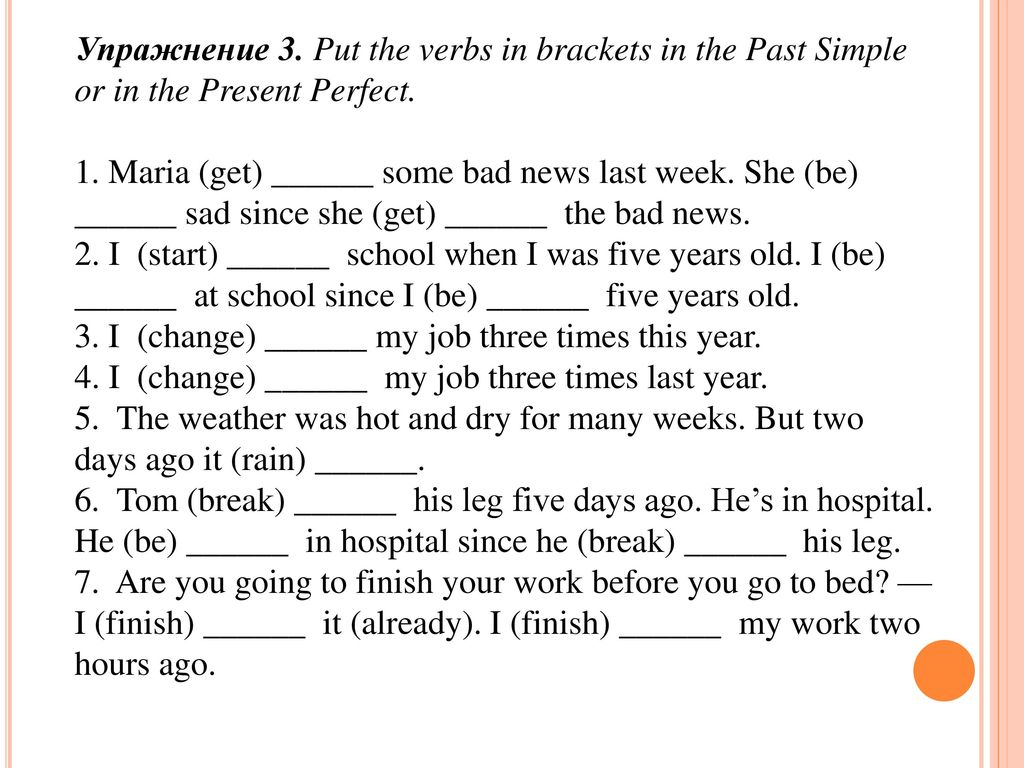 com
comMon:08:00am - 05:30pm
Tue:08:00am - 05:30pm
Wed:08:00am - 05:30pm
Thu:08:00am - 05:30pm
Fri:08:00am - 05:30pm
Sat:Closed
Sun:Closed
Facebook Blog Google Instagram Yelpamerican express, mastercard, visa, discover, cash, napa easypay, direct debit, voyager network, ari, wex fleet, easypay, voyager, wex
Are you in a hurry or running late for a meeting but unfortunately, you got a flat tire all of a sudden? And you're wondering, how long does it take to repair a flat tire? We did some research for you, and this is what we discovered.
Typically, it takes 30 minutes to an hour to fix a tire depending on the extent of the damage. If the repair only needs the installation of plugs, it usually just takes 2 to 3 minutes, while a radial patch usually takes 20 to 30 minutes.
Keep scrolling as we dive into the causes of flat tires, how to repair a flat tire, and how long a patched tire usually lasts. We'll also cover the things you need to know before you get your damaged tire repaired. Moreover, we'll also discuss how to change tires in case you can't wait for the repair.
We'll also cover the things you need to know before you get your damaged tire repaired. Moreover, we'll also discuss how to change tires in case you can't wait for the repair.
Before you continue reading, let us say we hope you find the links here useful. If you purchase something through a link on this page, we may get a commission, so thank you!
To repair a flat tire, there are three ways to do it:

This procedure usually takes approximately 20-30 minutes and may take longer depending on the severity of the incision.
 Pull the pliers out by rotating them 90 degrees. If the rope is excessively long, cut it off and wait about five minutes for it to dry completely and entirely.
Pull the pliers out by rotating them 90 degrees. If the rope is excessively long, cut it off and wait about five minutes for it to dry completely and entirely.You must wait for five minutes or more to make sure that the plug is firmly secured at the mouth of the hole after the adhesives are dry. Ensure that water and moisture cannot penetrate into the tire so you will have peace of mind while driving.
Completing the repair may take less than 15 minutes. Additionally, a plugged-in tire can only travel for 25,000 miles, enough to let you drive further until you reach an automotive repair shop.
Combining patching and plug procedures improves the repair's success rate. To do this, you must follow these steps:

A tire patch-plug is a lengthy procedure. The entire process will take roughly 30 minutes or longer to complete.
Remember, not all punctures or damage on your tires need to be repaired. Here are a few guidelines to know if you should go for a tire repair or not:
 Damage to the inner liner that is not visible from the outside may have occurred.
Damage to the inner liner that is not visible from the outside may have occurred.If you're wondering what caused your flat tire, here are the possible reasons:
A cut or infiltration of a sharp item, such as a nail or shattered glass, is the most typical cause of a damaged tire. Your tire will leak air over time due to the implanted sharp object, resulting in a flat tire.
Valve stem leaking is a common cause of tire problems. The valve stem is the part of the tire that you unscrew when you need to inflate it. Any damage or simply dirt on this small piece could cause air to leak out of the tire until it is completely level, similar to valve stem leaking.
Potholes, uneven roadways, and stray debris can cause damage to your car's wheels, axles, and undercarriage. The worse the state of the road, the more likely it is that a tire may be destroyed.
The worse the state of the road, the more likely it is that a tire may be destroyed.
An over-inflated tire can put too much pressure on the tire, resulting in a rapid blowout. To avoid a blowout, it is critical to record the maximum air inflation limit of your tires as a preventative step. You can find these details in the owner's manual for your car.
During the hottest months of the year, your tire is most likely to fall flat. High temperatures cause the air in your tire to expand, increasing the inner weight of the tire. When this happens, your tire's chances of losing pressure and, even worse, becoming flat increase.
When the tires are cold, most passenger cars recommend a pressure of 32 to 35 psi. When tires are cold, contact between them and the road generates heat, which raises both the temperature and the air pressure.
The appropriate tire pressure is usually printed on a sticker inside the driver's door on newer cars. If there isn't a sticker on the door, the specs are normally found in the owner's manual.
If there isn't a sticker on the door, the specs are normally found in the owner's manual.
However, remember to not pump your tires to the recommended pressure on the tire. This is the maximum pressure the tire can withstand, not the vehicle's recommended pressure.
If you don't have much time and you need to immediately drive to your next destination, then your only option is to change tires.
The time it takes you to replace a tire is determined by your level of skill, the tools you have accessible, and the location where you are parking. Non-professionals, on the other hand, need 15 to 20 minutes to replace one tire.
To change tires, you need to do:

To reiterate, tire repair generally takes up to 30-60 minutes, depending on the intensity of the damage and the repair method used. Although it is still best to let professionals repair the damaged tire if you have time to spare.
If you're wondering why your tires wear fast even though your car's new, you can read this article: Why Do New Car Tires Wear Out So Fast?
Before you go, check these related articles to know what tires best fit if you have a Mazda 3 or Hyundai Ioniq:
What Are The Best Tires For Mazda 3
What Are The Best Tires For A Hyundai Ioniq?
Author: Aleksey Kokorin
Experienced drivers are not surprised by such a trifle as a puncture, but for the first time beginners usually get confused in the sequence of actions, forget about important details and do not know what to do with a punctured wheel even in a tire shop - especially if they start offering choose from several options or intimidate with expensive repairs. Let's set up an operation algorithm when a flat tire is detected and figure out what to do right away and what to choose later.
What to do when you find a puncture
Having found a flat tire, first of all you need to stop in a safe place, turn on the emergency alarm, assess visibility and, if necessary, set an emergency stop sign: according to traffic rules, it is installed at least 15 meters from the car in built-up area and at least 30 meters outside the built-up area. When choosing where to stop, consider the space to the side of the vehicle to handle a flat tire. You should not stop right on the road and in places where stopping and parking are prohibited: even if a punctured wheel belongs to the conditions of a forced stop, it is quite possible to drive several tens of meters on it to choose a safe and convenient parking place. At night or in conditions of limited visibility (for example, in fog or rain), it is imperative to wear a vest with retroreflective elements - this is required by clause 2.3.4 of the SDA and common sense.
When choosing where to stop, consider the space to the side of the vehicle to handle a flat tire. You should not stop right on the road and in places where stopping and parking are prohibited: even if a punctured wheel belongs to the conditions of a forced stop, it is quite possible to drive several tens of meters on it to choose a safe and convenient parking place. At night or in conditions of limited visibility (for example, in fog or rain), it is imperative to wear a vest with retroreflective elements - this is required by clause 2.3.4 of the SDA and common sense.
Now you can start working on the wheel. We will sequentially consider several options for action, and then move on to ways to repair a damaged tire.
The most obvious solution to a flat tire is to replace it. If you have a spare tire that you are sure is in good condition, the best option is to install it and visit a tire shop to repair a punctured tire - such repairs will be more reliable and of high quality than doing it yourself.
If you don't have a suitable spare tire, but you do have a pump or compressor, you can assess the damage to the tire and try to pump it up again to get to the tire shop. It is better to start searching for an air leak with a valve (aka “nipple” or “nipple”): often a faulty spool becomes the cause of a flat tire. It is easy to check it: unscrew the protective cap (if there is one), pour water on it (or slobber it, as in childhood): air bubbles will leak. In this case, you can try to replace the spool valve by unscrewing it and screwing in a new one, but if there is no new valve, as well as a store nearby, you can try just unscrewing and screwing it back in. Regardless of whether it helped or not, you need to visit a tire shop to replace the entire spool or valve.
If the valve is tight and the tire is flat, it is most likely a puncture. The easiest way to find a puncture that is free of foreign objects is to pour water on the tire while looking at the surface: the damage will reveal itself as air bubbles.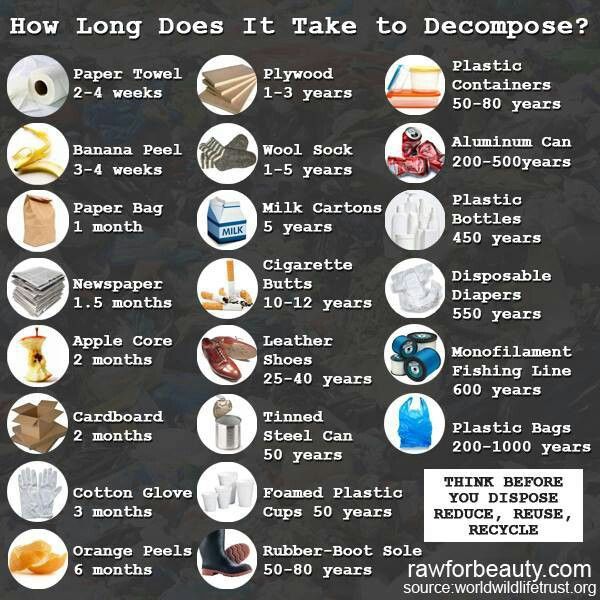 However, often the cause of the puncture can be found along with it: a self-tapping screw, nail or other arbitrary object sticking out of the wheel will clearly indicate the place of depressurization. In this case, you do not need to immediately remove the foreign object from the tire: it partially seals the hole, and if the pressure loss is slow, you can try to pump up the wheel and drive to the tire shop.
However, often the cause of the puncture can be found along with it: a self-tapping screw, nail or other arbitrary object sticking out of the wheel will clearly indicate the place of depressurization. In this case, you do not need to immediately remove the foreign object from the tire: it partially seals the hole, and if the pressure loss is slow, you can try to pump up the wheel and drive to the tire shop.
The same goes for wheels that are leaking from the rim or from a faulty valve. Usually, in this case, the air is bled slowly, and you can pump up the wheel and have time to get to the place of repair. By the way, rim leakage can occur due to disk deformation upon impact - for example, when hitting a pit with sharp edges. Such situations are fraught with damage to both the disk and the sidewall of the tire, in which case the disk will need to be corrected, and the tire repaired or even replaced. To avoid rim leaks, you need to inspect the rims every time you change tires.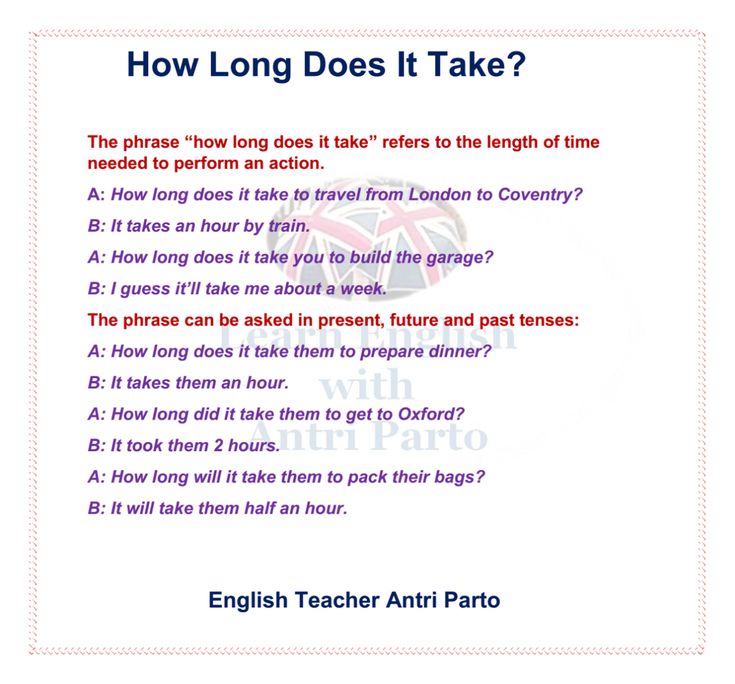 The loss of tightness occurs either due to corrosion or due to disc deformation, and not only steel, but also light alloy wheels can corrode. So if you see paint blistering or rust on the rim, the tires need to be put on rim sealant: when changing tires, this will be cheaper than the subsequent removal and re-tire to fix a leak on the rim.
The loss of tightness occurs either due to corrosion or due to disc deformation, and not only steel, but also light alloy wheels can corrode. So if you see paint blistering or rust on the rim, the tires need to be put on rim sealant: when changing tires, this will be cheaper than the subsequent removal and re-tire to fix a leak on the rim.
If you find a puncture, but there are no foreign objects in it, and you do not have a spare wheel and tire repair kits, there is another popular method of temporary "repair". You can screw a self-tapping screw into the found hole - if, of course, you have one. In extreme cases, you can look for a self-tapping screw in the cabin by unscrewing it from some interior detail. This method cannot be called reliable: it is unlikely to ensure complete tightness of the wheel, but at least it can help you get to the nearest tire shop.
And a couple more useful remarks. If the wheel is completely flat, then it is easier to inflate it without a spool: the latter must be unscrewed, then the tire must be inflated and quickly screwed back in. The fact is that the spool itself, when inflated, resists the compressor, and in the event of a loose fit of a flat tire to the disk, the power of a simple magazine compressor may not be enough, and the absence of a spool helps to increase air flow and facilitate the operation of the compressor. If this does not help, you can jack up the car by hanging a flat tire: this will improve the fit of the tire to the disk, and the chances of inflating the tire will increase.
The fact is that the spool itself, when inflated, resists the compressor, and in the event of a loose fit of a flat tire to the disk, the power of a simple magazine compressor may not be enough, and the absence of a spool helps to increase air flow and facilitate the operation of the compressor. If this does not help, you can jack up the car by hanging a flat tire: this will improve the fit of the tire to the disk, and the chances of inflating the tire will increase.
On-Site Repair Methods
Now let's look at options for repairing a tire yourself using special materials that you should carry with you or, if a puncture caught you in the city, buy it at the nearest auto shop.
1. The most common, cheapest and easiest way to do it yourself is to install a raw rubber band. The harnesses are sold complete with an abrasive awl to expand the hole in the tire and improve the contact of the repair harness with its edges, as well as a needle for installing the harness and an adhesive to fix it and at the same time seal the puncture. When choosing a repair kit in a store, you should pay attention to the following nuances:
When choosing a repair kit in a store, you should pay attention to the following nuances:
Install the harness in the following order. First, the found hole is expanded with an abrasive awl - you need to insert and remove it several times into the puncture site. Then the tourniquet is inserted into the eye of the needle, and glue is applied to it. After that, the needle with the tourniquet must be inserted into the hole in the tire and pulled out sharply - so that the tourniquet remains in the hole, and the needle comes out without it. If everything worked out, it remains only to cut the end of the harness flush with the surface of the tire and pump up the wheel.
The advantages of repairing with a harness are quite decent reliability, simplicity and low cost. On a well-repaired tire, you can drive for a long time, and if the repair site starts to poison, you can either replace the harness or have the tire repaired in a quality service. Among the minuses is the possibility of damaging the cord during installation, as well as lower reliability compared to “full-fledged” repair methods in a tire shop. Strictly speaking, a tourniquet is still a temporary repair, so if it is possible to pump up a wheel and get to a tire fitting, then it is better not to enlarge the hole in the tire and get to the experts.
On a well-repaired tire, you can drive for a long time, and if the repair site starts to poison, you can either replace the harness or have the tire repaired in a quality service. Among the minuses is the possibility of damaging the cord during installation, as well as lower reliability compared to “full-fledged” repair methods in a tire shop. Strictly speaking, a tourniquet is still a temporary repair, so if it is possible to pump up a wheel and get to a tire fitting, then it is better not to enlarge the hole in the tire and get to the experts.
2. The second repair option is aerosol liquid sealants sold in cans. To repair a punctured tire with sealant, you need to remove the foreign object from the puncture site, then pour the sealant into the wheel through the valve, twist it to distribute the composition inside the tire, pump up the wheel and drive several kilometers at low speed for the final uniform distribution of the sealant.
Among the advantages of this repair is the simplicity and less labor intensity compared to installing a harness. However, there are also disadvantages: the larger the hole, the higher the chance that the sealant will not be able to eliminate it, and such a repair can affect the wheel balance. Compared to a tourniquet, it can be considered even less reliable and preferable, but simpler.
However, there are also disadvantages: the larger the hole, the higher the chance that the sealant will not be able to eliminate it, and such a repair can affect the wheel balance. Compared to a tourniquet, it can be considered even less reliable and preferable, but simpler.
Repair options at a tire shop
If you put on a spare tire and brought the wheel to a tire shop, you may also be offered several repair options. Consider the most popular with an indication of the advantages and disadvantages.
1. The first repair method is the same harness installation as described above. As we remember, the tourniquet refers to a temporary repair, so among tire specialists this method is considered bad form, but many workshops do not exclude it from the list of services. All the advantages and disadvantages are the same here: such a repair will be the fastest, simplest and cheapest, but less reliable than other methods. It is worth choosing it in cases where the price and / or speed of the procedure is more important to you than anything else. If quality is a priority, then it is better to fork out for the options listed below.
If quality is a priority, then it is better to fork out for the options listed below.
2. The second option for repairing a puncture is to install a patch on the inside of the tire, the so-called cold vulcanization. In this case, the tire is removed from the disk, the surface around the puncture is treated with an abrasive, and the damage is sealed with a special patch. This is a more preferred repair method than a tourniquet: it is more reliable and durable, especially in the case of side punctures, when not the thick tread part of the tire is damaged, but the thinner sidewall. Among the minuses, only a higher cost can be noted: in addition to the actual tire repair, you will have to pay for the removal and installation of the wheel (or do it yourself), tire fitting and balancing.
3. The third option is a "complex" of the first and second: installation of the so-called repair "fungus". The “hat” of the fungus is a patch, and the “leg” is threaded from the inside of the tire to the outside. After gluing the patch, the excess part of the leg is cut off, as in the case of the tourniquet. Thus, not only the inner surface of the tire is closed, but also the hole itself. The advantages and disadvantages of this repair method are generally the same as those of a patch.
After gluing the patch, the excess part of the leg is cut off, as in the case of the tourniquet. Thus, not only the inner surface of the tire is closed, but also the hole itself. The advantages and disadvantages of this repair method are generally the same as those of a patch.
4. An extreme, “emergency” measure when repairing a punctured wheel is to install a camera in it. Typically, this method is used for tires that are no longer worth repairing, or “for reliability” after repairing a complex puncture. It should be understood that almost all modern tires are tubeless, that is, they are not designed to install a camera, so it’s not worth driving a wheel repaired in this way for a long time. Installing a tube is a temporary solution for riding until a new tire is purchased, and sometimes such wheels are left as spares. So this repair method can be kept in mind as a backup.
Finally
We have deliberately left out of this text such methods as combined repair of tires with a tourniquet and a patch and hot vulcanization. The first is used quite rarely and for specific damage, and it is enough just to know about its existence. Well, the second is used to repair serious side cuts, and it is not only rare, but also very expensive. The cut site in this case is prepared, filled with raw rubber and processed with a hot press for vulcanization. Equipment for this procedure is not available in every tire shop, and the cost of repair can be about half the cost of a new tire.
The first is used quite rarely and for specific damage, and it is enough just to know about its existence. Well, the second is used to repair serious side cuts, and it is not only rare, but also very expensive. The cut site in this case is prepared, filled with raw rubber and processed with a hot press for vulcanization. Equipment for this procedure is not available in every tire shop, and the cost of repair can be about half the cost of a new tire.
interesting popular questions
Articles / Repair and maintenance Air filter index: Parts price pullback, no shortages and a flurry of fakes The ruble exchange rate has stabilized in recent months at a relatively comfortable level for importers. Did prices for spare parts and consumables follow? In general, yes, and the prices for some... 19one 0 0 09. 11.2022
11.2022
Articles / Popular questions Not only alcohol: with what symptoms it is forbidden to drive Usually, only alcohol and drug intoxication are considered restrictions with which it is forbidden to drive. At the same time, all the symptoms with which you can not drive a car are indicated in one bulletin. 818 0 one 07.11.2022
Articles / Interesting 5 reasons to buy and not to buy Daewoo Matiz I Perhaps Matiz in Russia became the third car in terms of the number of ridicule after Zaporozhets and Oka. But are these caustic chuckles in the direction of a pretty car fair? Maybe it's just bra... 2763 2 one 06. 11.2022
11.2022
Test drives / Test drive Haval Dargo vs Mitsubishi Outlander: the dog is barking, the stranger is coming In the Haval dealership in the south of Moscow, life is in full swing: buyers look at cars, communicate with managers and sign some papers. While I was waiting for the test Dargo, the same cross... 15540 7 205 13.09.2022
Test drives / Test drive Motor from Mercedes, emblem from Renault, assembly from Dacia: test drive of the European Logan 1.0 It would seem that what's new can be told about the second generation Renault Logan, known to every Russian taxi driver, as they say, up and down? However, this car has.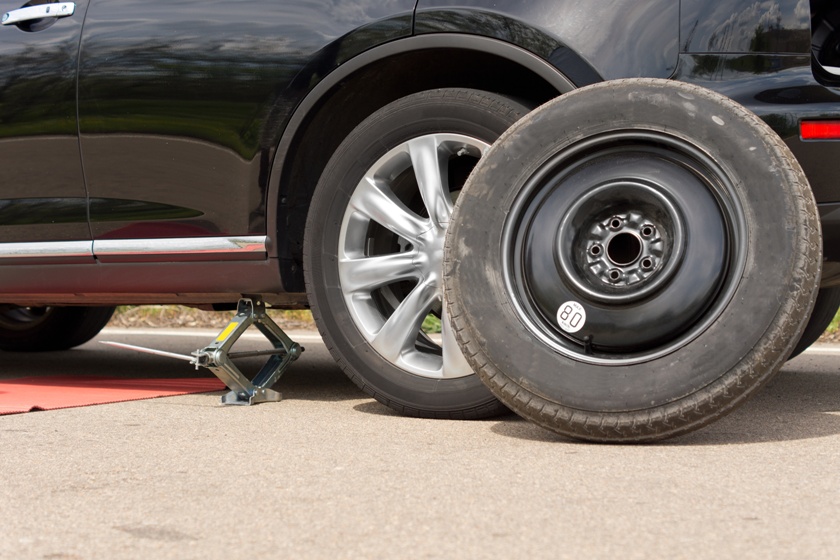 .. 13152 ten 41 08/13/2022
.. 13152 ten 41 08/13/2022
Test drives / Test drive Geely Coolray vs Haval Jolion: Free Cheese? If! Do you want to buy a car today with a full warranty, on credit at an adequate rate, without wild dealer markups? Now this is still a task, because a full-fledged chain of "representation - s... 10237 26 thirty 08/10/2022
A thrifty and prudent driver will solve any problems. Two ways to repair a tire in the field after a puncture
Let's say you have a flat tire on the way. Let's complicate the task - there is no spare.
Anyway, the current situation is not a cause for despair.
In a favorable case, a flat tire will be noticed in the parking lot.
This will definitely happen if you develop a useful habit - to inspect the condition of the wheels every time you approach the car.
Such an easy habit can save a lot of time and nerve cells on the road.
Let's assume that trouble did occur.
The car is standing, leaning against the side of the flat tire. Let's examine the existing arsenal. If a compressor is present, then the next steps are simple and logical.
Inflate the wheel and check for a puncture.
Let's raise the car on the jack and, having scrolled it, we will carry out a visual inspection. It may happen that a flat tire is a hello from secret ill-wishers.
If no repairs are required, you can continue driving.
If, however, a nail or screw is found embedded in the tread pattern during inspection of the wheel, then repair cannot be avoided.
Radial tubeless tires hold a puncture well. Just pumping air into the wheel, you can try to get to the tire shop. Keep in mind that any ride on a tire with a foreign body stuck in it will continue to destroy it.
The best tactic is to start the repair as soon as the cause of the puncture is discovered. At this point, you will need a first aid kit with a set of tools for repairing a tire breakdown.
The minimum sufficient first aid kit should include a spiral awl, a special needle with an eye, a tube of non-expired glue and impregnated tourniquets. The described method can be used only if the tread tracks are damaged by a puncture.
Do not repair tire sidewalls using this method.
Since the shoulder area is the junction of several highly loaded structural elements.
Only an experienced technician can determine the extent of the damage and carry out a qualified repair.
Another limitation: the method is only effective if the damage diameter is at least 6 mm.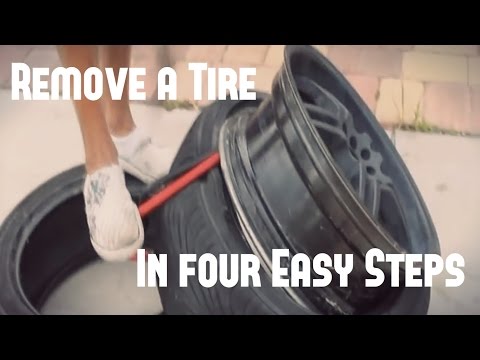
Care must be taken during the procedure.
The most important thing is to determine the angle at which the breakdown occurred.
If you make a mistake, there will already be two holes on the inside of the tire. One from a puncture, and the second - done by inaccurate manipulation. For a more gentle tire puncture in the first aid kit, it is a spiral awl.
Introduce it, avoiding excessive force to pierce undamaged tire tissue.
If the cord is damaged, steel threads may stick out of the damage. They will have to be removed, because when the wheel is rotated, they will move and peel off the patch.
Further actions correspond to the instructions.
We smear the repair tape with glue.
Especially for those who want to save money, a warning: you need to take a whole tourniquet, it will not work well from a part of the tourniquet.
Using an introductory awl reminiscent of a boot stalk, we push the impregnated tourniquet into the puncture until the handle rests against the tread.
To make the wheel flatten less, let's pump it up to 0.2-0.3 atm. The device, turning perpendicularly, gently, but with a jerk, pulls out. After our manipulations, a loop should form inside. For shrinkage, 2-3 mm is left, and the rest of the protruding part is cut off with a knife.
Field repairs will give us some time.
If the repaired tire holds pressure, it can be used for several days. Then you need to contact the workshop.
In the case when there is no time to collect a first-aid kit, and there is no desire to bother with a patch, then a spray-sealant of the LongWay type will help.
Smart cars are equipped with similar compounds. They do not include a spare wheel.
Special spray can be purchased at almost any auto shop.
The foreign object that caused the puncture is removed first.
The spray is poured into the tire through the valve under pressure from a can. In this case, the wheel is inflated.
In this case, the wheel is inflated.
Then pressurize the tire to working pressure. As the wheel rotates, the sealant will evenly coat the inside of the wheel. Air leakage will stop.
The biggest disadvantage of this method is that the sealant will have to be removed in the workshop before curing. Accordingly, the better the sealant, the more difficult and expensive it is to remove.
The conclusion is simple: a thrifty and prudent driver will cope with any problem with ease.
Despite the obvious progress in the automotive industry, the trivial problems associated with the car, unfortunately, do not go anywhere. So, for example, even the newest and heaped "gelding" can become a victim of the simplest nail, which is already "a hundred years old."
Therefore, such skills as do-it-yourself wheel replacement, as well as tubeless repair, will always come in handy even for those who have a cool foreign car. Of course, there will be those among you who will say that someone who has a cool "gelding" can not do this and call a gun carriage or service employees . .. Well, theoretically yes, but there are places in Russia where there is no service station, and the call of employees to the place is simply impossible due to the lack of cellular network coverage. And in general, it is unlikely that "mersovods" read our site, but the owner of "" or some "" such knowledge will come in handy. In principle, it is easier, and it would seem, rather, to change the wheel, and upon arrival, give the wheel for repair to some craftsman who, for a nominal fee, will repair the puncture and return the wheel "to life". But as I said, situations are different, just like people, it’s difficult for one even to change a wheel, while the other has never been to a service station in his life and always repairs everything himself. Well, enough talk, let's, as they say, from words to deeds.
.. Well, theoretically yes, but there are places in Russia where there is no service station, and the call of employees to the place is simply impossible due to the lack of cellular network coverage. And in general, it is unlikely that "mersovods" read our site, but the owner of "" or some "" such knowledge will come in handy. In principle, it is easier, and it would seem, rather, to change the wheel, and upon arrival, give the wheel for repair to some craftsman who, for a nominal fee, will repair the puncture and return the wheel "to life". But as I said, situations are different, just like people, it’s difficult for one even to change a wheel, while the other has never been to a service station in his life and always repairs everything himself. Well, enough talk, let's, as they say, from words to deeds.
There are several ways to repair tubeless wheels. The most popular among them are: tire repair with harness , puncture repair with a cribbing patch, as well as special sprays that "tighten" the puncture site, eliminating air leakage. To repair a tubeless tire, you need to have some tools and fixtures, though everything largely depends on which repair method you choose, as well as the degree of damage to the wheel itself.
To repair a tubeless tire, you need to have some tools and fixtures, though everything largely depends on which repair method you choose, as well as the degree of damage to the wheel itself.
To repair a tire using the repair harness, requires a special kit to carry out this type of repair. The kit includes: two awls (for preparing and installing the harness), glue, a set of harnesses. In principle, this set may differ depending on the manufacturer of this set.
 If there is a foreign object at the puncture site, it should be removed.
If there is a foreign object at the puncture site, it should be removed. With the right approach and proper execution, this method allows you to securely seal the tubeless, which will last a long time.
This method involves removing the wheel and the tire itself from the rim. For work, you must have: patches in the form of fungi, which are sold in all car dealerships, sandpaper (or other tool for roughening the surface), glue.
For work, you must have: patches in the form of fungi, which are sold in all car dealerships, sandpaper (or other tool for roughening the surface), glue.
Tire sealant, which is popularly called "spare in a can", is usually included in a repair kit in "premium class" cars, where, in in principle, not provided. However, over time, such spray cans appeared on the free market, and now any lazy person can quickly and inexpensively seal the wheel automotive sealant for tubeless tires.
Despite the apparent simplicity and "frivolity" of such repair of tubeless tires, the sealant is quite popular among motorists, who confirm the uniqueness and high efficiency of this method of wheel repair.
You have discovered that you have a flat tire. What would be the most logical course of action to take in this situation? Get a jack, a canister, a spare wheel (dokatka), having previously removed all things from the trunk, put on gloves and put on a spare wheel.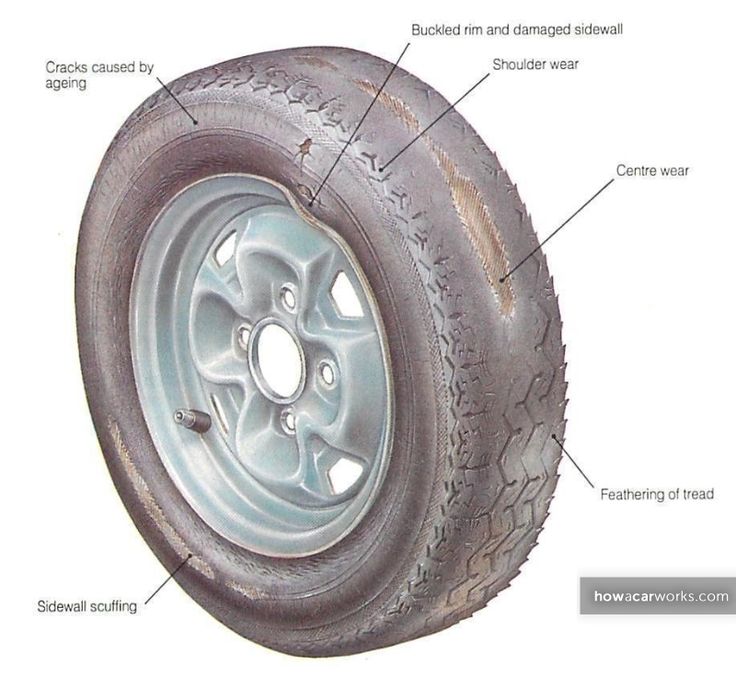 Then put the punctured dirty wheel in the car and go to the nearest tire shop. Correctly?
Then put the punctured dirty wheel in the car and go to the nearest tire shop. Correctly?
Our recommendation is to start by inflating the tire. Almost all modern tires are tubeless, and in case of hit by small sharp objects - nails, self-tapping screws, etc. - descend rather slowly (now we are not talking about serious punctures or cuts). Most likely, you will have some time left to get to. Therefore, when you see that the wheel is flat, first try to pump it up and, controlling the condition of the wheel, move towards the tire shop.
In this way, you will avoid dirty work on the tire, the spare tire will remain clean, and there will be no need to put a dirty punctured wheel in the trunk. In addition, not every driver will be able to correctly install the jack and remove the wheel. To put a spare tire, you need to have a certain qualification, and often physical strength. Yes, and in the car there should be a jack, a balloon, plus an inflated (preferably) spare tire.
And one more thing: if, when examining a flat tire, you find a nail, screw or other object in it, do not rush to remove it. If this is done, then it will be almost impossible to pump up such a wheel - the air will quickly escape into the hole that has formed.
If this is done, then it will be almost impossible to pump up such a wheel - the air will quickly escape into the hole that has formed.
Many motorists carry a special tire repair sealant in their car. It not only seals the puncture site, but also creates a certain pressure in the tire. There are liquid sealants, there are aerosol ones. Each type has its own application features, described in the instructions. Sealants are suitable for both tube and tubeless tires. They will help if two wheels are punctured (and one spare wheel will be useless here) or in the case when, even after pumping, the air comes out too quickly. Will not help if the damage occurred on the sidewall of the tire. It should be borne in mind that when using some sealants, the wheel balance changes - therefore, then it will definitely have to be disassembled and the entire refueling composition removed from there.
If, approaching the car, you see severe damage, for example, from a knife, you will have to use a jack in the same place to put a spare wheel or a stowaway (a temporary wheel used in such cases) and then go to a tire shop. You can't fix this on your own. In general, it is believed that after a side cut, it is better to throw out the tire, because. there is a risk that it may burst even after repair. Although many tire fitters do not agree with this. Therefore, here everyone decides for himself.
You can't fix this on your own. In general, it is believed that after a side cut, it is better to throw out the tire, because. there is a risk that it may burst even after repair. Although many tire fitters do not agree with this. Therefore, here everyone decides for himself.
You can stock up on self-tapping screws - if the wheel is damaged on the road, and there is no sharp object left in it, you can simply screw the self-tapping screw into the punctured place with a screwdriver. This will help prolong the life of the wheel and allow you to get to the tire shop. Remember that this only works if the hole in the tire is not too big.
Why is this method bad? It is not always possible to screw a self-tapping screw into the same hole at the same angle. As a result, two holes in the tire may turn out, which will complicate subsequent repairs in a car service.
This method is not suitable for owners of wheels with cameras. Here you will either have to disassemble the wheel and replace the camera completely, or patch it up. In the general case, vulcanizers are used for this - devices for installing pieces of raw rubber on holes. The patches are sintered with the wheel under the influence of high temperature. Such equipment is available in car services, but in the field this method is hardly applicable.
In the general case, vulcanizers are used for this - devices for installing pieces of raw rubber on holes. The patches are sintered with the wheel under the influence of high temperature. Such equipment is available in car services, but in the field this method is hardly applicable.
Those who have their hands growing from the right place can be advised to purchase a tire repair kit on the road. It includes a tourniquet to fill the puncture and an awl that resembles a file in texture. Sometimes a special sealant is also included here - to use it, you just need to unscrew the nipple, connect the can to the wheel and introduce a small amount of compound, after which the puncture will be filled with sealant. The main disadvantage is that you need to visually find the defect, which is sometimes difficult. In addition, in the field it is often difficult to remove an object that has pierced the wheel and is firmly stuck in it.
It is very dangerous when holes appear at speed, as this may cause the driver to lose control. In this case, the pressure in the wheel can drop sharply. On long trips, try to inspect the wheels more often to avoid accidents on the road. If there are any minor damage, it is better to fix them immediately.
In this case, the pressure in the wheel can drop sharply. On long trips, try to inspect the wheels more often to avoid accidents on the road. If there are any minor damage, it is better to fix them immediately.
If you feel that the tire is damaged while driving, first of all try to firmly hold the steering wheel in the correct position. When the pressure drops in the tire, there is a big risk of losing control - the car starts to pull strongly to the side. The steering wheel can just knock out of the hands. It is important to stop as soon as possible, as driving on a flat tire will jam the tire and most likely damage the disc. However, the speed must be reduced smoothly, without sudden braking. Most often, cars of motorists who ignore this rule are skidding.
If you managed to somehow patch up a hole on your own, or just pump up a wheel, or put on a spare tire, you should immediately go to the nearest tire shop. It is better to drive slowly in such a situation. In principle, it is forbidden to drive fast on a dokatka, the maximum speed must be written on the side of the tire. When driving on a damaged wheel, it will not be superfluous to periodically stop, measure the pressure in the tire and, if necessary, pump up the tire.
When driving on a damaged wheel, it will not be superfluous to periodically stop, measure the pressure in the tire and, if necessary, pump up the tire.
How to be especially unlucky drivers who have pierced (pierced) 2, 3 or even all 4 wheels at once? In this case, the most correct way to repair a car will be to dismantle the damaged wheels using a jack (jacks). They will have to be taken to a tire shop. You can, however, try to fix them in the field, but after that, carefully and, we repeat, not quickly go straight to a car service or tire shop.
Aleksey Poltavskiy, Avtoklub78
Of course, there is nothing worse for a driver than finding a flat tire when his family is about to leave town for a vacation. But we must consider ourselves lucky compared to what people had to face in the 50s. Since then, tire technology has developed so rapidly that even the very first entry-level tires guaranteed a certain level of resistance, not to mention tubeless tires or run flats.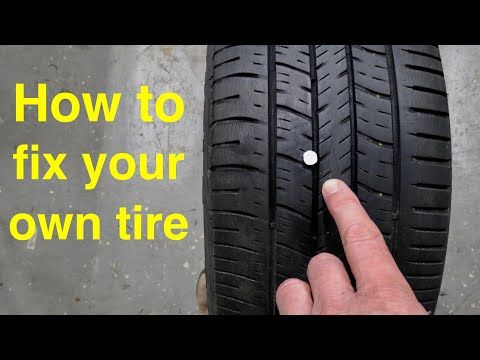
In this article you can learn about:
Foreign body: debris intrusion into tread, resulting in loss of pressure, change in speed. Incorrect Inflation: Contrary to some popular ideas about tires, underinflation is more risky than overinflation. Therefore, driving with pneumatic tires can cause serious damage to the tire, its internal structure and lead to an increase in rolling resistance. The risks associated with a puncture then increase and become more difficult to diagnose.
This article is not about changing a wheel, instead, we will try to give you the most helpful information about the behavior you should take.
As soon as you feel the first vibrations in the steering wheel, or when the steering becomes difficult to control, pull over immediately.
Please be careful: driving with a flat tire will ruin the wheel in no time.
Puncture spray. See detailed description . You can restore tires.
If you ride a tubeless tyre, using "puncture spray" will cause the least damage to the wheel. This operation is limited. The spray contains foam that will fill gaps left by debris or punctures. Before proceeding further, you will need to determine the exact location of the puncture and remove debris from the tread before injecting the aerosol through the valve.
Keep a moderate speed after this repair, until the nearest tire service.
If previous attempts have failed, you can use the spare tire.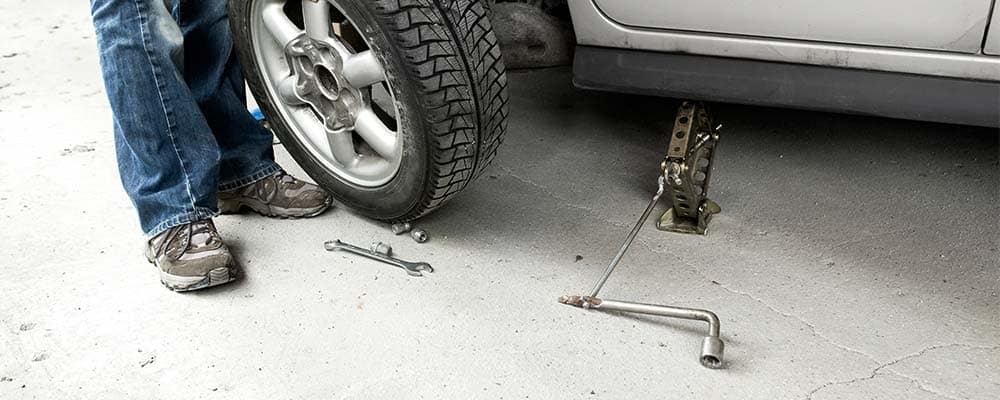 If you have to go to the spare tire, please make sure you check the pressure in it.
If you have to go to the spare tire, please make sure you check the pressure in it.
It must not exceed the norm. In order to change a wheel, the first step is to apply the handbrake to the car so that the car does not move while changing the wheel. To do this, remove the bolts, lift the car off the jack and finish by loosening the bolts to remove the wheel. Take the spare tire and start tightening the bolts.
After the vehicle is on the ground, torque should be applied to the bolts to make sure the wheel is properly screwed on. The spare tire should not be treated as a normal tire and therefore keep to a speed of no more than 50 mph.
Attention! Never use the spare tire permanently.
If you don't have a tubeless tire repair kit, even though you actually know how to use it, a visit to the repair shop is the best option.
Wheels are one of the most vulnerable parts of a car and a real magnet for hooligans. A punctured tire can spoil your mood for the whole day, cause you to be late for work or cause problems on the road (if you don’t have a spare tire). Of course, the cost of repairing a puncture will not ruin the car owner, but it will take a lot of time to repair the damage.
A punctured tire can spoil your mood for the whole day, cause you to be late for work or cause problems on the road (if you don’t have a spare tire). Of course, the cost of repairing a puncture will not ruin the car owner, but it will take a lot of time to repair the damage.
Punctured tire
If you walk out to the parking lot one morning and notice that your car has a flat tire, you should carefully inspect it for cuts or punctures. In case of obvious damage, you will need to repair the puncture on the spot or a trip to the tire shop.
No visible punctures or cuts? Then there are 2 reasons for the tire to deflate:
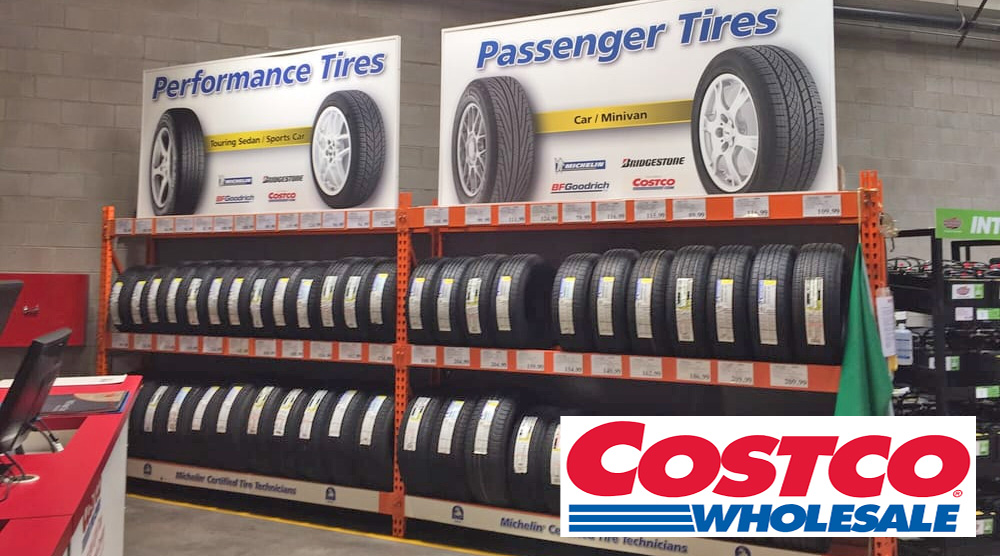
If a side cut or puncture flaunts on the tire, and you are sure that this is the work of ill-wishers, you can go on principle and write a statement to the police. Punishment for a punctured wheel is a fine, and in some cases - criminal liability and a suspended sentence. But for this it is necessary not only to find the attacker, but also to prove his guilt.
Only an extremely principled motorist wants to waste time on statements, calculation of criminals and courts. Most will direct all their efforts to the speedy repair of a puncture.
What should I do if I have a flat tire on my car? The main thing is to find the damage, assess its nature and extent. It happens that the tire is lowered, but very slowly, for 30 minutes, an hour or more.
If you find yourself in a similar situation, jack up the wheel and look for damage on the tread. The cause of a puncture can be an ordinary construction screw, which turned out to be at the wrong time, in the wrong place. If a fastener really sticks out of the wheel, carefully screw it in to the end and go to the tire shop.
If a fastener really sticks out of the wheel, carefully screw it in to the end and go to the tire shop.
Wheel puncture.
How to check a wheel for a puncture without visible damage? The easiest way is to coat the tire with soapy water and find a puncture by small air bubbles.
If the damage is minor, a special aerosol tire sealant is the quickest solution. Introduced through the wheel nipple, it fills the tire from the inside, creating a barrier for air to escape. In this case, the wheel can not even be hung out. It is enough to wait a few minutes, and you can go to the tire shop for a more thorough repair of a puncture wheel.
Quick repair of a puncture with a harness
Don't know what to do if your tires are punctured in the yard? Every motorist needs to carry a quick tire repair kit in the trunk. According to the standard it includes:
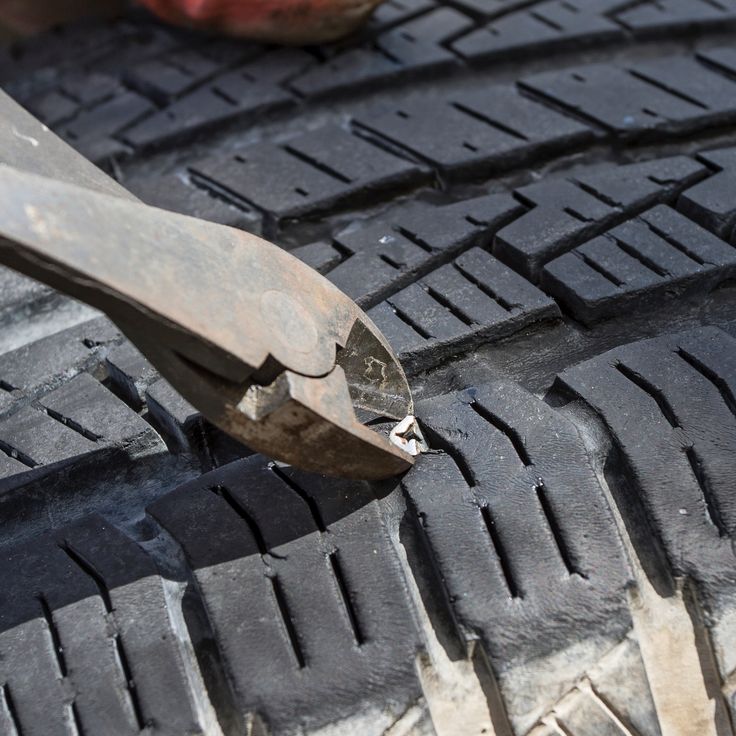
Procedure for detecting a puncture:
Quick tire repair kit. The procedure for detecting a puncture.
Such repair of a puncture will allow the tire to be used for no more than 1.5-2 months. Over time, the air will still begin to leave the place of damage, and the tire will have to be changed.